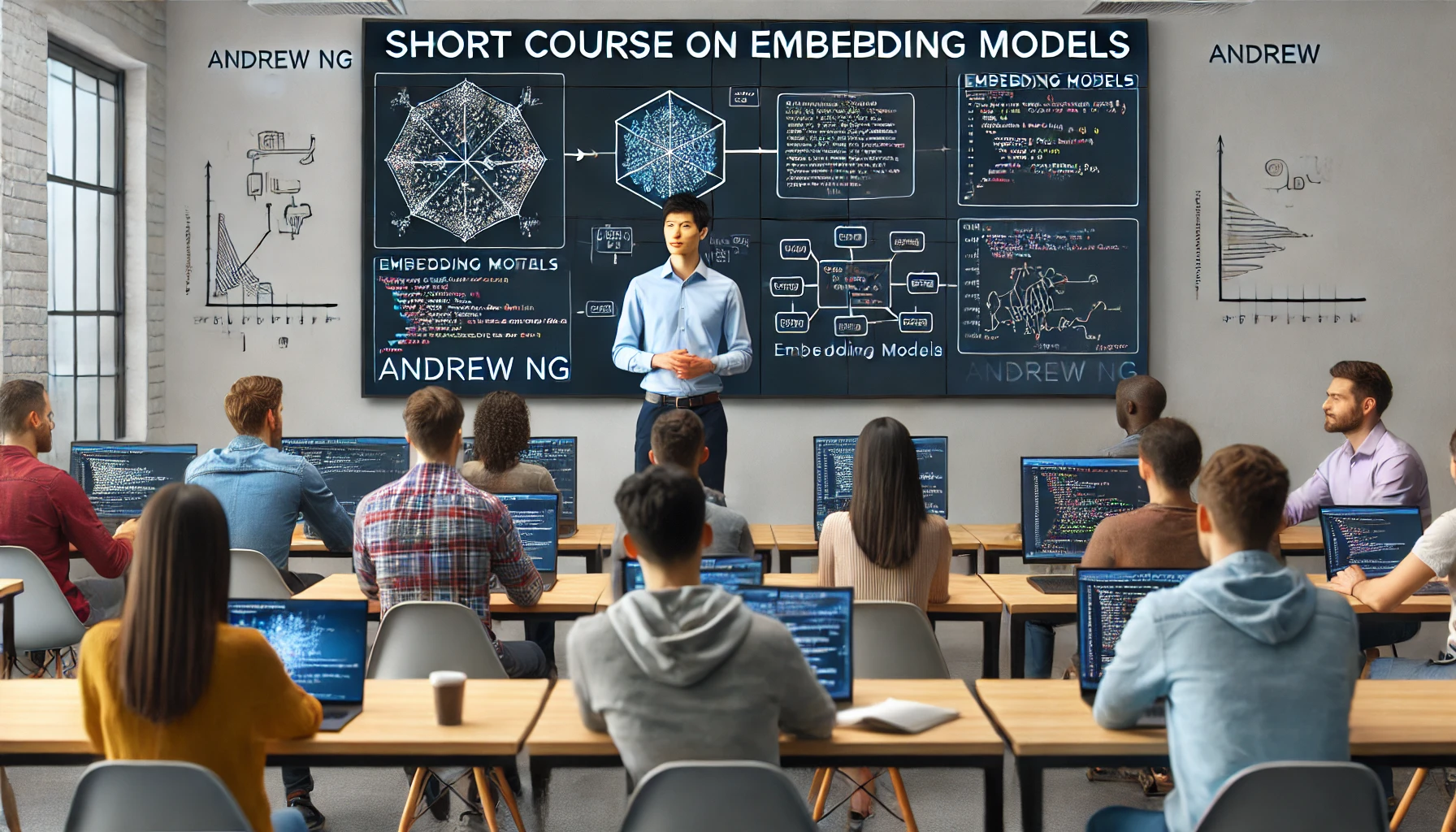Hello Learners…
Welcome to the blog…
Table Of Contents
- Introduction
- New Short Course on Embedding Models by Andrew Ng
- What we learn in this course
- Who can enroll in this course?
- Summary
- References
Introduction
In this post, we give some introduction about New Short Course on Embedding Models by Andrew Ng. It is used when we working with LLM models.
New Short Course on Embedding Models by Andrew Ng
This course explores the architecture and capabilities of embedding models in detail, focusing on how these models capture the meaning of words and sentences for various AI applications.
In this we will learn about the evolution of embedding models, from word to sentence embeddings, and build and train a simple dual encoder model.
This hands-on approach will help us understand the technical concepts behind embedding models and how to use them effectively.
What we learn in this course:
- Learn how to use word embedding, sentence embedding, and cross-encoder models in RAG.
- Learn how to train and utilize transformer models, especially BERT (Bidirectional Encoder Representations from Transformers), in semantic search systems.
- Gain insights into the evolution of sentence embedding and learn how developers created the dual encoder architecture.
- Use a contrastive loss to train a dual encoder model, with one encoder trained for questions and another for the responses
- Utilize separate encoders for question and answer in a RAG pipeline and see how it affects the retrieval compared to using a single encoder model.
By the end of this course, We will understand word, sentence, and cross-encoder embedding models, and learn how to train and use transformer-based models like BERT in semantic search.
You will also learn how to train dual encoder models with contrastive loss and evaluate their impact on retrieval in a RAG pipeline.
Who can enroll in this course?
This course is perfect for data scientists, machine learning engineers, NLP enthusiasts, and anyone interested in learning about the creation and implementation of embedding models,
These are essential for building semantic retrieval systems.
If you have basic Python knowledge, this course will guide you through an in-depth exploration of building models and capturing the semantic meaning of words and sentences, regardless of whether you have experience with generative AI applications or are new to the concept.
